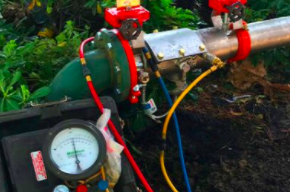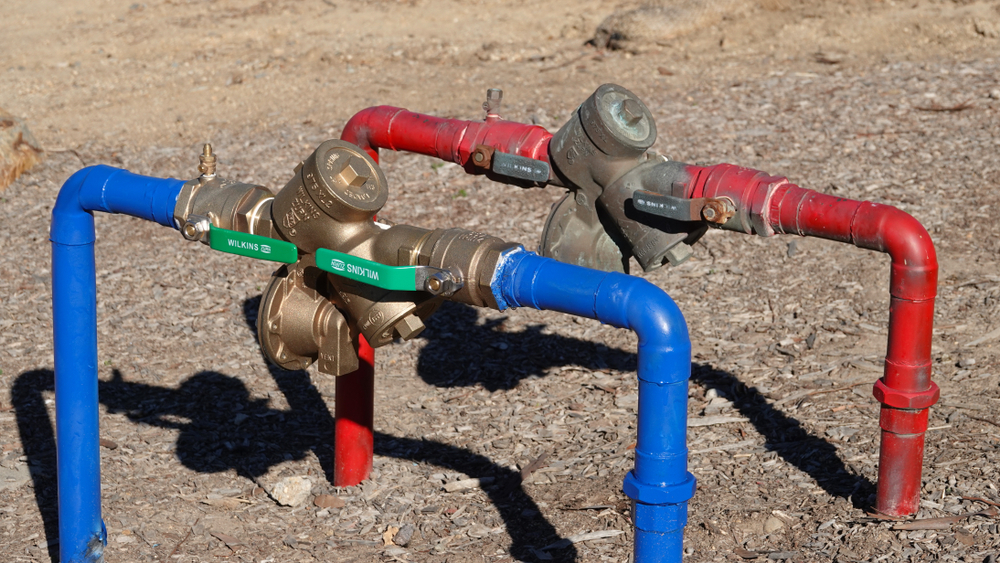Should I Conduct a Backflow Test on My Water
Should I Conduct a Backflow Test on My Water
Blog Article
What're your thoughts concerning Is backflow testing necessary??

Yes, you require to backflow test your home's water system to ensure that the water is without contaminants and harmful levels of chemicals. Due to the devices needed as well as area for mistake, you must not try to execute heartburn screening by yourself. We recommend that you call a specialist plumber every couple of years to test your water.
Heartburn Can Impact Both You as well as Your City
Due to the fact that harmful backflow can influence the public water supply in addition to a solitary building, many cities develop heartburn standards. Fortunately, modern cities have backflow gadgets in position that safeguard the water that originates from most houses and also business residential properties. The real risk comes from irrigation systems, which can harm the supply of water with hazardous plant foods, manure, as well as other chemicals.
What Creates Backflow?
A normal reason of heartburn is a loss of water pressure that causes the water to siphon back right into the water supply. After some time, there is a loss in water stress as well as the hose pipe begins to suck the water back right into the water supply. As you can picture, there are currently chemicals from the paint that are getting in the water supply, potentially posing a hazard.
Backflow Testing is Needed by Law in Specific Cities
Depending upon where you live, you could really be needed by law to backflow examination your regulation. Iowa City maintains a record of all residential properties served by the city's water supply. The city requires that particular "high-hazard" facilities undergo heartburn testing. Sometimes, residential properties such as homes as well as apartment buildings are impacted.
You Can Avoid Backflow
The major function of a backflow gadget is to prevent water from moving in reverse right into your water supply. Plumbers mount the device on the pipelines in your residence to ensure that the water only moves in the appropriate instructions.
What is Heartburn?
Simply put, heartburn is when water moves upwards-- the opposite direction in the plumbing system. This is additionally called "backpressure." When the water relocates this instructions, it can mix with dangerous contaminants and position a risk.
Call a Plumber to Check for Heartburn Prior To It is Far too late
While it might seem grim, polluted water can cause dreadful microbial and also viral infections that are hard to deal with. A plumbing firm can promptly check your home's water to identify if there are any kind of hazardous chemical degrees. The tiny financial investment is if you can avoid the suffering that comes from drinking contaminated water. And also if you do uncover that your water has high degrees of toxic substances, a plumber can easily set up a backflow avoidance tool.
Yes, you require to backflow test your house's water supply to make sure that the water is free of toxins and also dangerous degrees of chemicals. Many cities develop backflow guidelines because unsafe heartburn can affect the public water supply in enhancement to a solitary building. A typical reason of heartburn is a loss of water pressure that causes the water to siphon back right into the water supply. After some time, there is a loss in water pressure and also the pipe begins to draw the water back into the water supply. The primary function of a backflow tool is to prevent water from flowing backwards into your water supply.
WHY DOES BACKFLOW TESTING NEED TO BE DONE EVERY YEAR
What Is Backflow?
Toxic gas backing up into a building is one example of potential backflow issues, but backflow can occur in many other ways.
Backflow is generally referred to as the reversal of a liquid or gas in a plumbing system.
Most issues for the public occur with backflow resulting in contaminated drinking water. If you look up backflow issues online you’ll probably find references to “potable” water. That means drinking water.
There have been backflow issues in the past with drinking water. Chemicals, sewage and other contaminants have found their way into drinking water causing health issues for those that count on the fresh water.
What Causes Backflow?
In a residence or commercial building water generally flows one way. This normal flow is usually driven by consistent pressure in the water and waste system.
Anything that changes the normal pressure in the system can lead to backflow.
Fire hydrant use or malfunction can reverse the normal pressure in the system on a city line, but backflow can occur in a number of different ways.
Sometimes backpressure might be caused by someone using a garden hose and submerging the end of the hose in a pool of liquid. If pressure is lost the flow could reverse and contaminants could be released into the drinking water.
Anytime there is a connection between contaminants and the drinking water there is potential for a backflow issue. Sometimes these connections are not immediately obvious like the garden hose connecting to a building’s drinking water supply.
Backflow Regulations
The Environmental Protection Agency (EPA) provides guidelines and regulations for state and local governments regarding backflow. State and local governments also have their own guidelines and regulations for backflow prevention.
Arizona has its own backflow regulations.
Due to issues with backflow in the past, regulations require backflow preventer devices to be used in nearly all residential and commercial buildings.
A backflow preventer is a device that prevents backflow as cross-connection points where potential backflow issues may occur.
While backflow is not a common occurrence, preventers are in place to make sure there is no contamination should something malfunction or go wrong with a building’s water supply.

As a reader about Backflow Prevention, I thought sharing that piece was beneficial. Sharing is nice. You just don't know, you might be doing someone a favor. Thank you for going through it.
Drain woes? Connect. Report this page